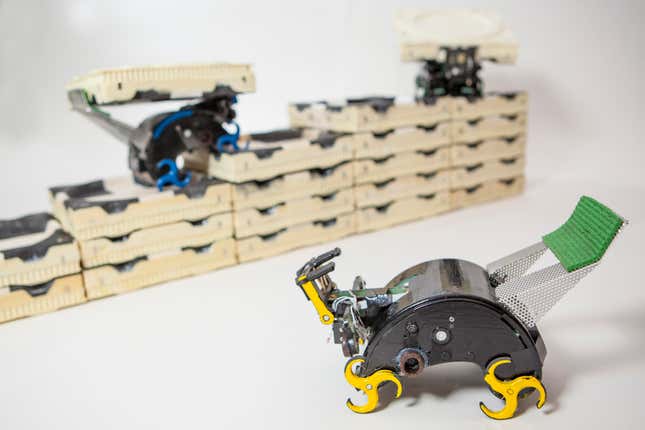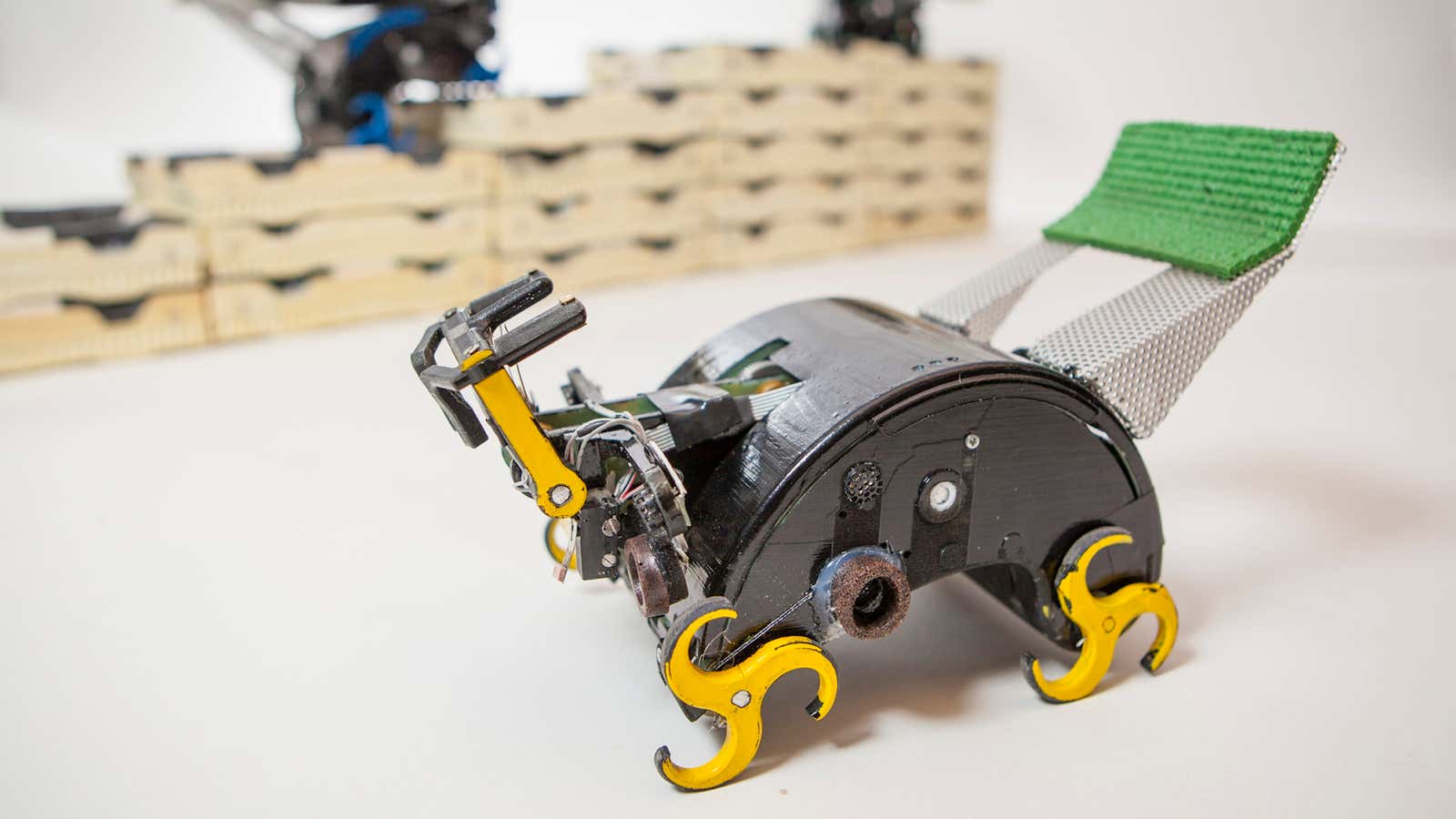Termites have a reputation for breaking buildings down, not constructing them. But that’s about to change. Harvard engineers have used the insects as inspiration for a new robot called the TERMES. One day, they say, it could complete simple construction tasks without any supervision.
Why termites? The insects practice a form of self-organization called stigmergy, or the use of markers in the environment left by one organism to determine the action taken by the next one. Ants, for example, leave a track of pheromones—smelly chemicals—when en route to the nest from a food source. This creates a network of trails that tell the whole colony where to go for dinner. Termites use pheromones to work in a group as well. They scoop up balls of mud and deposit them, at first randomly, after dousing them with pheromones. Because those pheromones attract their nest-mates, termites are more likely to drop mud on a spot that’s already been visited. Eventually, structures will emerge. In this way the bugs can achieve a unified goal without individually knowing what they’re building.
After a time, of course, termites blindly following this impulse would just make a solid mass of dirt. That’s why their queen releases guiding pheromones, setting rules for where building can occur. That’s how the TERMES robots will work, too. Check them out:
The successful prototype of the TERMES is described in the Feb. 14 issue of Science. Engineers provided the robots with construction blueprints, then left them alone. The TERMES built the structures by observing and reacting to the other robots around them—no further instruction from humans required. Because they work independently, the same construction plan can be executed by a dozen TERMES or a thousand of them. But because their directives are so simple—put down a brick that fits in the building plan, where no one else has laid one down–they require little processing power. The prototype TERMES use specially built bricks to construct towers, castles, and pyramids. But the researchers say they could also handle simple tasks like laying sandbags down before floods. They could even perform simple construction on other planets. And while the prototype robots are about the size of a desk phone, researches say they could eventually scale them up or down.

For complex construction projects, we probably shouldn’t give up on human workers just yet. It may be that the ideal robotic workers will have some combination of stigmergic instincts and more sophisticated controls. “But we’ve proven the extreme end of the scale,” said Radhika Nagpal, a professor of computer science who lead the research, “that it could be just like the termites.”
